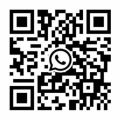Japan and South Korea to invest in the production of 2020 power battery for two years countdown
Aug 27, 2021 Pageview:1369
In recent years, with the strong promotion of national subsidy policy and the precise protection of battery catalogue, a number of local battery enterprises represented by ningde times have witnessed rapid growth in their share. However, with the end of the subsidy for new energy vehicles in 2020 and the re-entry of a number of foreign battery giants into the domestic market, domestic brands are feeling unprecedented pressure.
Securities daily reporter noted that since April this year, the three major battery companies in South Korea, including Samsung, LG and SKI, have changed their silence and launched a new round of investment in China with a high profile.
On April 11, huru cobalt announced that it planned to set up two joint ventures with LG chem to produce lithium battery materials with a joint investment of 4 billion Yuan. SKI recently announced that it would invest 86.4 billion won to restart its 2016 joint venture in China to produce battery materials.
On May 2, lee jae-eyi, vice chairman of Samsung electronics of South Korea, visited byd in Shenzhen. The trip was interpreted as an attempt to seize the opportunity of China's rapid development of electric vehicles and expand the sales of chips, power batteries and upstream components in China's auto industry.
Panasonic's chief executive, kazuhiro tsuga, recently announced at the company's annual earnings conference that it would team up with Tesla to produce batteries in China. Panasonic has long wanted to enter China's growing market for electric cars and batteries, he said. As subsidies fade and world trade organisation rules come down, the stranglehold of power batteries in China is dissipating.
A group of strong and ready for 2020
The power battery industry had a bumper year in 2017. China accounted for more than half of the 1.42 million new energy vehicles sold worldwide last year, according to the data. Demand for 70, 000 batteries is also up 30 per cent from a year ago, and the pie is largely split among local battery companies. But the surface prosperity cannot cover the stage problem that the market development faces.
As early as early April, Shenzhen watmar battery co., LTD., the world's fifth largest seller of power batteries and the third largest seller of power batteries in China, was found to have defaulted on debts of 2 billion Yuan, with the total debt as high as 221 Yuan. 3.8 billion Yuan. In addition, many small and medium-sized power battery enterprises have closed down under the pressure of cost. In contrast, ningde, the world's largest power battery sales company in 2017, finally got the IPO approval on May 18 and raised as much as 54 Yuan. 400 million Yuan.
On the one hand, the new energy vehicle subsidy policy will end after two years. On the other hand, China will try its best to reach the sales target of 2 million new energy vehicles. The expiration of policy protection and the huge gap in high-quality production capacity provide opportunities for Korean batteries to re-enter the Chinese market. In fact, Samsung SDI made it clear in its first-quarter earnings report: "we will prepare for the end of subsidies for [China's] new energy vehicles in 2020."
It is worth noting that in this round of investment in Korean battery companies, considering the risk of policy avoidance, they have strengthened the cooperation with domestic enterprises -- of course, the domestic enterprises with weak strength, non-lithium battery technology accumulation or weak willingness to develop in the lithium battery field. At the same time, south Korean companies are extending their reach to the upper end of the industry chain, including SKI's joint venture and LG's new battery joint venture.
The reporter noted that in terms of research and development investment, LG chem, Samsung SDI and Panasonic invested 3.5 billion Yuan, 2.8 billion Yuan and 2 billion yuan respectively in 2017, while ningde times, the largest leading power battery enterprise in China, spent only about 1 billion Yuan in the same period. The gap between other local enterprises is even wider.
Power battery experts told the securities reporter that due to the accumulation of research and development, research and development input, technical route selection and other reasons, domestic battery enterprises' product competitiveness, service matching compared with Korean enterprises still gap. "The family raw material and the production cost are low, the automation degree is high. It's hard when you don't have the technical skills and you can't fight a price war.
What was once a shield is now a sword
In this context, the China automobile association issued the "notice on the implementation of the white list declaration for the automotive power battery and hydrogen fuel cell industry". Once announcement, cause intense echo inside course of study. Some insiders believe that whitelist, as a quality label, will promote the supply relationship between vehicle enterprises and power battery manufacturers from "relationship" to "strength" conversion, is expected to be approved whitelist enterprises will speed up the technical position between the middle and downstream enterprises.
According to "securities daily" reporter understands, power battery domain "white list" already was not the first time to put forward. As early as 2015, China's production and sales of new energy vehicles ranked first in the world. Then, Korean battery enterprises represented by Samsung and LG expand outward with the volume of national companies and adopt the strategy of losing money to clean up rivals and compete for and monopolize the market.
At that time, in the independent brand power battery system factory price is still generally in 2. When 5 Yuan to 3 yuan/Wh, the Korean manufacturer directly reduced the price of 18650 nickel-cobalt-manganese ternary battery to about 1 yuan/Wh, and locked the supply agreement of chery, geely, changan, saic, faw and other mainstream passenger car enterprises by virtue of "high quality and low price".
Therefore, the ministry of industry and information technology quickly stepped in and issued the standard conditions for the automotive power battery industry, which included the enterprises approved by the requirements of the standard conditions into the catalog for management, which directly declared the elimination of Korean battery -- a total of 57 selected power battery monomers and system enterprises, not a single foreign enterprise.
At the beginning of 2016, with the issuance of the notice of "bus temporary ban on the use of three-Yuan battery", the safety line of domestic power battery was formally constructed -- main engine manufacturers suspended the purchase agreement with foreign battery enterprises and turned to independent arms.
The time came in November 2016. At that time, a wave of mergers and acquisitions was set off by power battery, and the concentration of the industry was continuously improved. At this time, the ministry of industry and information technology duly promulgated the "automotive power battery industry standard conditions (2017)" (draft for comments). Reporters noted that the draft capacity requirements compared to 2015 increased 40 times.
Compared with the first "bailout" and the second ", push for development". The purpose of the white list is to support and guide the growth and growth of domestic brands. Up to now, the third generation of power battery has achieved mass production, the third white list is the role of foreign brands to launch a technical charge horn, accelerate the concentration of resources, and enhance international competitiveness.
Industry insiders say the new whitelist will focus on technology development and upgrading. Enter the "3. Enterprises on the "0 white list" will be more likely to obtain higher ratings and larger capital input when applying for project financing with state-owned background, and local governments will also provide preferential policies as an important reference when introducing projects.
The page contains the contents of the machine translation.
Leave Message
Hottest Categories
-
Hottest Industry News
-
Latest Industry News













